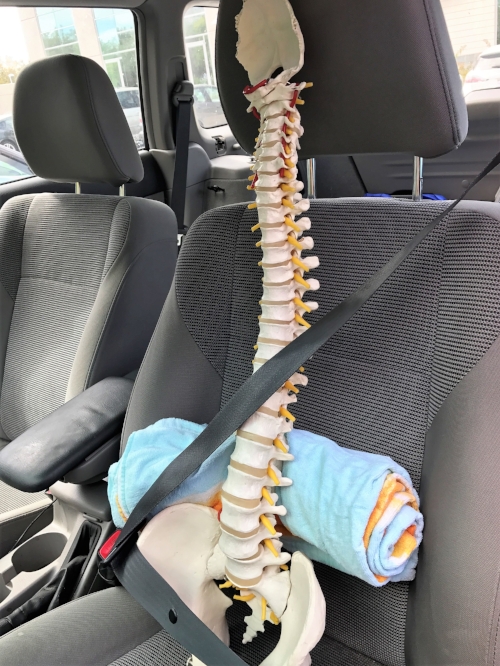There is a growing awareness of how sitting all the time is bad for our health. There is a growing demand for the sit-to-stand desks in the workplace. People are opting to try and move more. However, sometimes we just have to sit in our cars as we are stuck in traffic. We can't really avoid it. All those hours in the car can contribute to low back pain. Especially if we get road rage and tense up all of our muscles.
If we are stuck in our cars, at least we can drive with our low backs supported. You don't have to invest in the latest, greatest lumbar support pillow 2000. As seen above, you can make your own support from a towel you already have. Living in Southern California, I have an abundance of beach towels. I took one of those towels, folded it in half lengthwise, then rolled it up. Voilà! A lumbar roll perfect for supporting your low back and promoting good posture while in the car.
When placing the towel, you want it to be in the small of your low back, right above those hip bones (aka your iliac crests). It should help support the natural curve of your low back, and allow you to have better posture while in the car. (Thanks, R.L. Spine for modeling the proper placement of the lumbar roll!)
I'd also like to point out 2 more important safety tips for driving/riding in cars.
- Wear your seat belt!
- Make sure your head rest is positioned properly. The top of your head rest should be level with the top of your head, so in the event of a collision, your entire head is held in line with your body to prevent whiplash. You should also try to minimize the distance from the back of your head to your headrest (4 inches or less).
Happy (and safe) driving!




